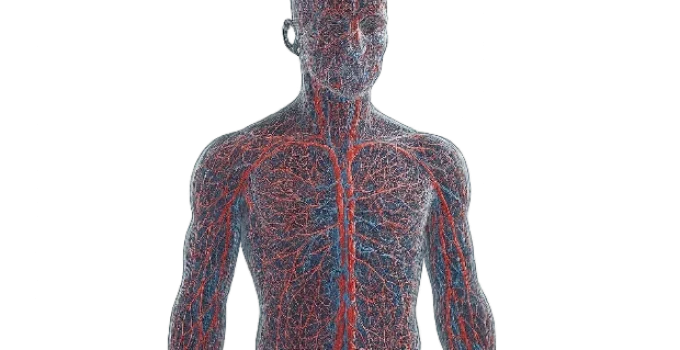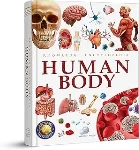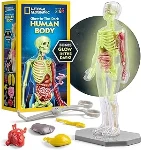What Are Capillaries?
Capillaries are the smallest blood vessels in your body—but don’t let their size fool you! These microscopic tubes are crucial for delivering oxygen and nutrients to your cells and taking away waste. In this article, you’ll learn what capillaries are, how they work, where they’re found, and why they’re so essential for your health.
🔎 Dive Deeper
- What Are Capillaries?
- How Are Capillaries Structured?
- What Is the Function of Capillaries?
- Where Are Capillaries Found?
- Types of Capillaries
- Why Capillaries Are Vital to Life
- 🟢 Final Thoughts
- 📚 References
What Are Capillaries?
Capillaries are the tiny blood vessels that connect arteries and veins. They form an intricate network throughout your entire body. Most capillaries are only one cell thick, allowing for fast and efficient exchange of materials between blood and surrounding tissues.
| 📊 Fun Fact: | The human body contains over 10 billion capillaries with a combined length of more than 25,000 miles! (BYU Idaho) |
How Are Capillaries Structured?
Capillaries are made up of a single layer of endothelial cells. These cells form a thin wall, making it easy for gases, nutrients, and waste to move in and out.
Key structural features include:
- Endothelial layer: very thin, allowing easy exchange.
- Basement membrane: supports the endothelial cells.
- Pores (in some types): to help substances pass through.
| 📊 According to the GSC Advanced Research and Reviews, capillaries measure between 5–10 micrometers in diameter, just wide enough for one red blood cell to pass through. |
What Is the Function of Capillaries?
Capillaries are the main sites of exchange between the blood and body tissues. Here’s what they do:
- Deliver oxygen from the blood to your cells.
- Bring nutrients like glucose and amino acids to tissues.
- Remove waste products like carbon dioxide and urea.
- Help regulate temperature by controlling blood flow.
- Allow hormones to reach target organs.
| 📊 The heart and blood vessels begin to form around the third week of fetal development. Circulation begins around the eight week of development. (National Institutes of Health)|
Where Are Capillaries Found?
Capillaries are found everywhere in your body, but they’re especially dense in:
- Muscles (to support movement)
- Lungs (for oxygen exchange)
- Intestines (to absorb nutrients)
- Kidneys (to filter waste)
- Brain (to supply oxygen and glucose)
| 📊 Your brain uses about 20% of your body’s blood supply, and it relies on dense networks of capillaries to meet its energy needs. (University of Rochester Medical Center) |
Types of Capillaries
Not all capillaries are the same! There are three main types, each with different structures and functions:
| Type | Description | Where Found |
|---|---|---|
| Continuous | Tightly packed cells; most common | Brain, muscles, skin |
| Fenestrated | Small pores for rapid exchange | Kidneys, intestines, endocrine glands |
| Sinusoidal | Large gaps for big molecules | Liver, spleen, bone marrow |
| 📊 Fenestrated capillaries have pores around 60–80 nanometers wide, allowing faster exchange. (International Journal of Molecular Sciences) |
Why Capillaries Are Vital to Life
Capillaries ensure that every cell in your body gets the oxygen and nutrients it needs—and that waste products are removed. Without them, your organs wouldn’t be able to function.
If capillaries become damaged or blocked, it can lead to serious problems like:
- Tissue death (from lack of oxygen)
- Organ failure
- Chronic wounds (due to poor blood flow)
| 📊 In people with diabetes, damage to capillaries can cause diabetic retinopathy, a leading cause of blindness. (NIH) |
🎯 Final Thoughts
So, what are capillaries? Capillaries might be tiny, but they have a huge impact on your health. Acting as bridges between arteries and veins, they allow for the transfer of everything your cells need to survive and thrive. Understanding how they work helps us appreciate just how incredible—and delicate—our circulatory system really is.
📚 References
- 📖 BYU Idaho – Capillaries. BIO 265 Anatomy and Physiology II. https://books.byui.edu/bio_265_anatomy_phy_II/243___capillaries
- 📖 National Center for Biotechnology Information (NCBI). “Histology Capillaries.” https://www.ncbi.nlm.nih.gov/books/NBK546578/
- 📝 Ahmed N Ghanem. “Capillary Ultrastructure Anatomy and Physiology: What Is Known, What Is Unknown or Missing, What Is Wrong and What Is New?” GSC Advanced Research and Reviews, vol. 10, no. 2, 28 Feb. 2022, pp. 073–094, https://doi.org/10.30574/gscarr.2022.10.2.0049. Accessed 1 Mar. 2022.
- 📖 Tucker, William D. “Anatomy, Blood Vessels.” Nih.gov, StatPearls Publishing, 8 Aug. 2023, www.ncbi.nlm.nih.gov/books/NBK470401/.
- 💻 Michaud, Mark. “Study Reveals Brain’s Finely Tuned System of Energy Supply.” URMC Newsroom, 7 Aug. 2016, https://www.urmc.rochester.edu/news/story/study-reveals-brains-finely-tuned-system-of-energy-supply.
- Mou, Xingrui et al. “Fenestrated Endothelial Cells across Organs: Insights into Kidney Function and Disease.” International journal of molecular sciences vol. 25,16 9107. 22 Aug. 2024, doi:10.3390/ijms25169107
- National Eye Institute. “Diabetic Retinopathy .” Nih.gov, 10 Dec. 2024, www.nei.nih.gov/learn-about-eye-health/eye-conditions-and-diseases/diabetic-retinopathy.
🎉 Related Products
Knowledge Encyclopedia: Human Body (Knowledge Encyclopedia For Children)
Why do your eyes blink? Why does your heart race when you run fast? How does your body know when to stop eating? This encyclopedia about the human body will answer these and many more whys and hows for you. Learning is made simpler with well-labelled diagrams and an extensive glossary of difficult words.
National Geographic Human Body Model for Kids
EXPLORE THE HUMAN BODY FROM THE INSIDE – Kids 8 years and up can study human anatomy by removing and examining 9 squishy organs, 18 glow-in-the-dark bones, and arm muscles Each piece can be individually removed from the 9 tall shell using the included forceps.
📌 Learn More About the Cardiovascular System
- How Does the Heart Pump Blood?❤️The Beat That Keeps You Alive
- What Are Arteries and Veins and How Are They Different?❤️Two Types of Blood Vessels Explained
- Why Is Blood Red?❤️The Colorful Chemistry Inside Your Body
- What Does the Aorta Do? ❤️The Body’s Biggest Blood Highway
- How Does Blood Travel Through the Body?❤️The 10-Step Pathway Keeping You Alive


